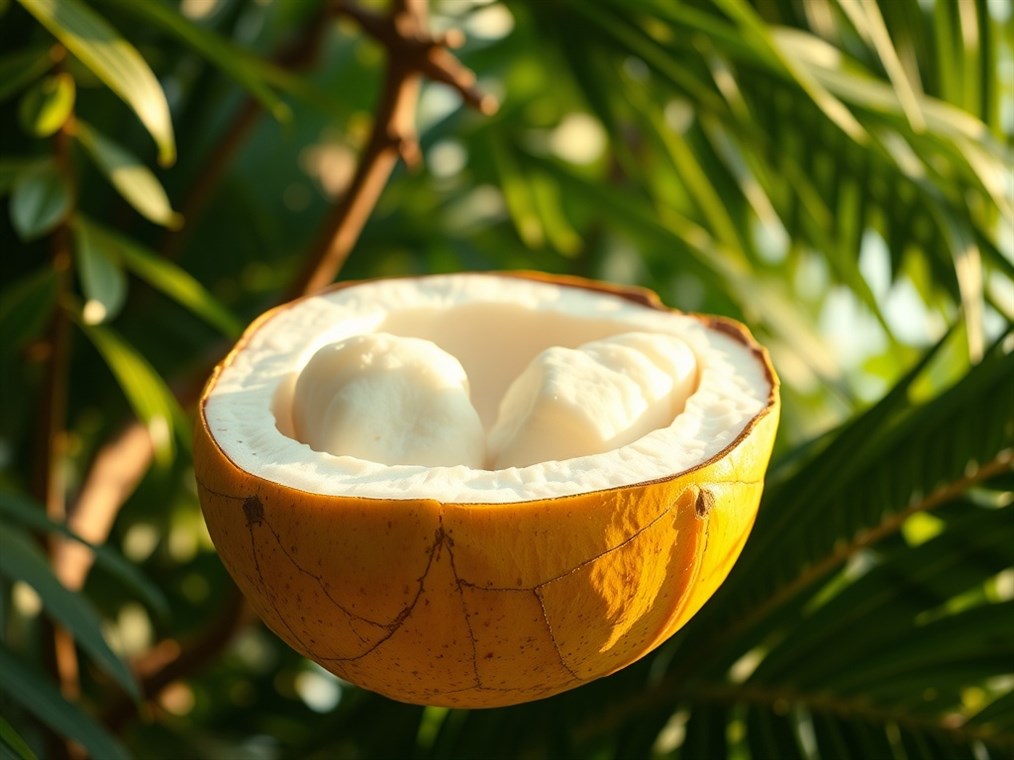The Coco de Mer: Can You Actually Eat This “Forbidden Fruit”?
Okay, so the Coco de Mer. What a plant, right? Scientifically, it’s Lodoicea maldivica if you want to get all fancy about it. But seriously, this thing is something else. Native to just a couple of islands in the Seychelles – Praslin and Curieuse – it grows the biggest seed in the world. We’re talking up to 30 kilos! Imagine lugging that around. And the shape? Well, let’s just say it’s famously… suggestive. All curves and contours, like a woman’s hips. No wonder it’s wrapped up in legends about fertility and all that good stuff. But here’s the real question that always gets me: can you actually eat it?
Turns out, the answer is yes! Who knew? But hold on a sec, it’s not exactly like popping down to the grocery store for an apple. There’s a whole lot more to it than that.
First off, this isn’t your average snack. The Coco de Mer is seriously protected. Think Fort Knox, but for a giant nut. The Seychelles government keeps a super close eye on these trees. They’re not messing around – it’s all about preventing poaching and keeping the species alive. Every single nut, even the ones on private property, gets tagged by the authorities. Try to sneak one? You’re looking at some serious fines, maybe even jail time. So, scoring a Coco de Mer for your culinary adventures? Let’s just say it’s a challenge.
Historically, though, people have found uses for it. Traditional medicine, for one. Apparently, back in the day in the Seychelles, they used it to treat everything from cancer to poisoning. It pops up in Ayurvedic and Chinese medicine too. And get this – in southern China, they sometimes use it as a flavoring. Talk about exotic!
Now, about the taste… This is where it gets interesting. You’ll hear all sorts of things. Some say it starts off bland, then you get hints of hazelnut, chestnut, maybe even a little goat cheese funkiness. Others swear it’s sweet and citrusy, like a super-charged coconut, but richer and creamier. And apparently, if you get your hands on an immature seed, there’s this jelly-like stuff inside that’s supposed to be a real delicacy. Locals love it!
But here’s the kicker: the kernel itself is hard. Like, seriously hard. They call it “vegetable ivory” for a reason. Good luck trying to bite into it raw – you’ll probably break a tooth. You definitely need to cook it or process it somehow to make it edible.
Nutritionally speaking, it’s supposed to be pretty good for you. Lots of micronutrients and carbs, practically no fat. Plus, you get those essential minerals like potassium and magnesium. Good for your heart, good for your bones, the whole shebang.
Believe it or not, there have even been a few times when chefs have gotten their hands on Coco de Mer and created some seriously fancy dishes. I remember reading about this culinary festival in the Seychelles a few years back where they had Coco de Mer ice cream, mousse, flan… the works! Apparently, it was all pretty tasty, though some people said the Coco de Mer flavor wasn’t strong enough. I guess it’s a subtle thing. Oh, and I’ve heard of people adding it to soups too. It soaks up all the flavors, which sounds pretty interesting.
But here’s the thing we can’t forget: sustainability. This nut is rare, and we need to be careful. Promoting eating it could lead to more poaching, and that’s the last thing we want. If you ever do come across Coco de Mer being used in food, make sure it’s from a sustainable source. Apparently, there’s a factory that collects nuts that have fallen naturally from the trees, which is the way to go.
So, there you have it. Yes, you can eat Coco de Mer. People have, in various ways, throughout history. But with its protected status, its rock-hard texture, and the real risk of harming the environment, it’s probably not going to be on your dinner plate anytime soon. For now, let’s just appreciate the Coco de Mer for what it is: a truly amazing symbol of the Seychelles that deserves our respect and protection.

